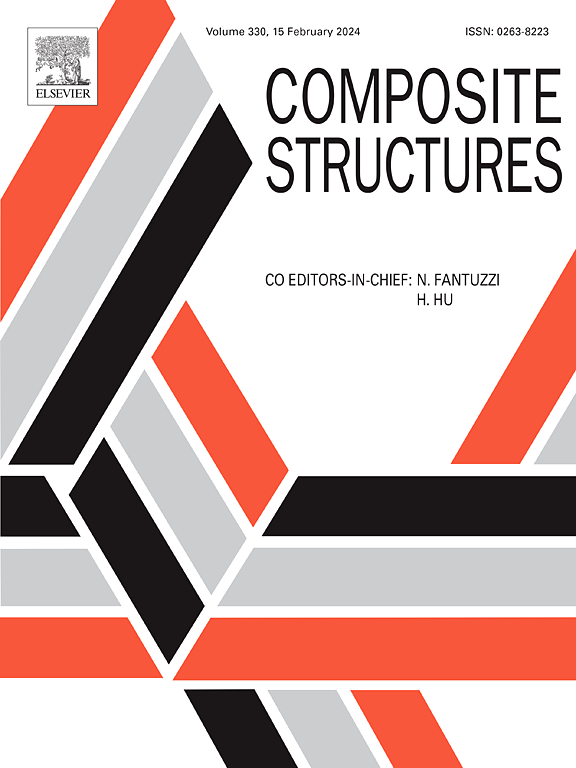Study on the nonlinear rolling behavior of small-scale thin-walled composite deployable structures
IF 6.3
2区 材料科学
Q1 MATERIALS SCIENCE, COMPOSITES
引用次数: 0
Abstract
In solar sail systems, achieving a high stowage-to-deployment ratio requires the use of ultrathin-walled booms to support expansive sail membranes, but these thin structures also introduce significant nonlinear behaviors during both deployment and rolling processes. This study investigates the mechanical behavior of small-scale thin-walled composite deployable structures (STWCDS) during the rolling process through a comprehensive approach that includes theoretical modeling, numerical simulations, and experimental validation. The theoretical model integrates conventional elastic strain definitions and cross-sectional geometries with additional nonlinear correction terms, accurately describing the transition from a flat configuration to a coiled state. Finite element simulations, considering geometric nonlinearities and contact interactions, were used to analyze maximum strain, strain energy, and stress distribution in both the upper and lower sections of the structure. Results indicate that the lower section consistently experiences higher maximum stress, making it more vulnerable to stress concentration and potential failure. Furthermore, the strain at the inflection points effectively captures the overall strain variation pattern, serving as a critical reference for design optimization. Experimental rolling tests on specimens measured strain values, demonstrating a strong correlation with theoretical and simulation predictions. This work thus provides essential insights for optimizing STWCDS in high-performance solar sail systems.
小型薄壁复合材料可展开结构的非线性滚动行为研究
在太阳能帆板系统中,要实现较高的收放比,就必须使用超薄壁吊杆来支撑膨胀性帆板膜,但这些薄结构在展开和滚动过程中也会产生显著的非线性行为。本研究通过理论建模、数值模拟和实验验证等综合方法,研究了小型薄壁复合材料可展开结构(STWCDS)在滚动过程中的机械行为。理论模型将传统的弹性应变定义和横截面几何形状与附加的非线性修正项整合在一起,准确地描述了从扁平构型到卷曲状态的过渡。有限元模拟考虑了几何非线性和接触相互作用,用于分析结构上部和下部的最大应变、应变能和应力分布。结果表明,下部的最大应力一直较高,因此更容易出现应力集中和潜在失效。此外,拐点处的应变可有效捕捉整体应变变化模式,为优化设计提供重要参考。对试样进行的滚动实验测量了应变值,证明与理论和模拟预测有很强的相关性。因此,这项工作为优化高性能太阳能帆板系统中的 STWCDS 提供了重要的启示。
本文章由计算机程序翻译,如有差异,请以英文原文为准。
求助全文
约1分钟内获得全文
求助全文
来源期刊

Composite Structures
工程技术-材料科学:复合
CiteScore
12.00
自引率
12.70%
发文量
1246
审稿时长
78 days
期刊介绍:
The past few decades have seen outstanding advances in the use of composite materials in structural applications. There can be little doubt that, within engineering circles, composites have revolutionised traditional design concepts and made possible an unparalleled range of new and exciting possibilities as viable materials for construction. Composite Structures, an International Journal, disseminates knowledge between users, manufacturers, designers and researchers involved in structures or structural components manufactured using composite materials.
The journal publishes papers which contribute to knowledge in the use of composite materials in engineering structures. Papers deal with design, research and development studies, experimental investigations, theoretical analysis and fabrication techniques relevant to the application of composites in load-bearing components for assemblies, ranging from individual components such as plates and shells to complete composite structures.
 求助内容:
求助内容: 应助结果提醒方式:
应助结果提醒方式:


